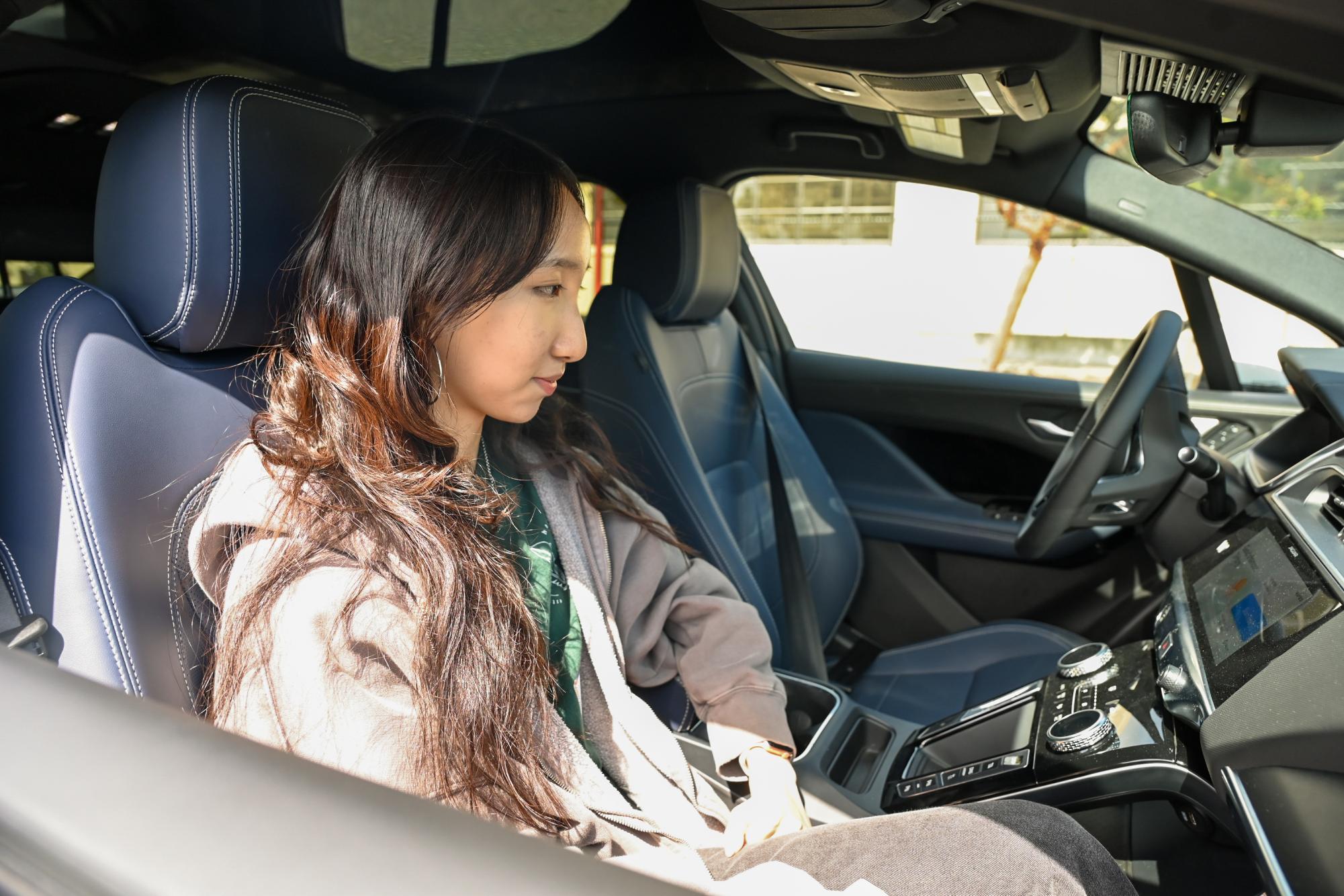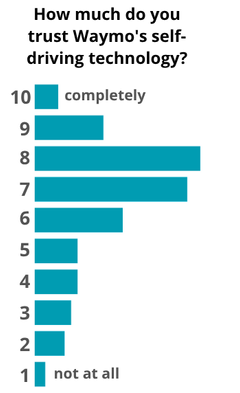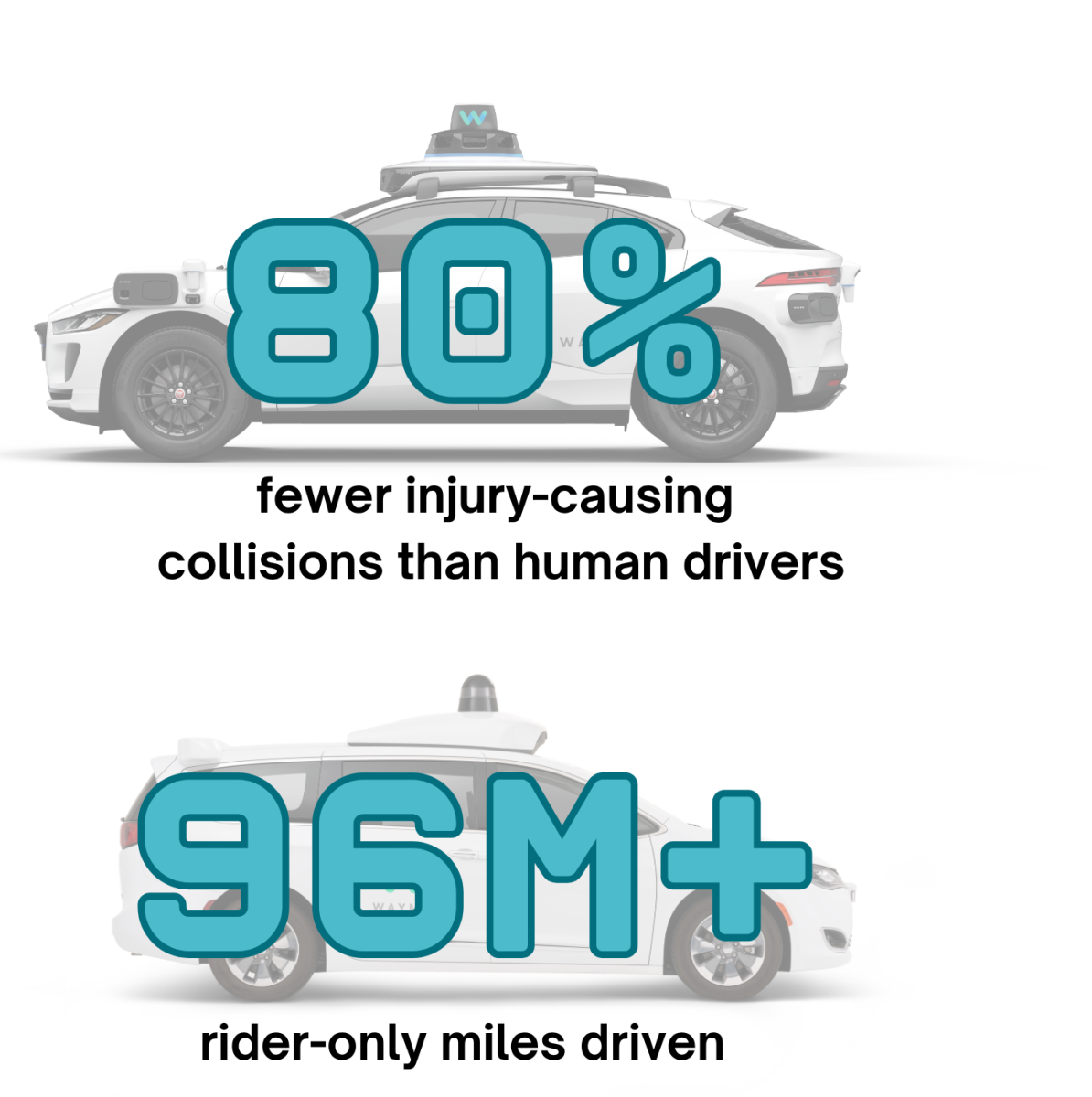Autonomous car company Waymo plans Silicon Valley operations

Autonomous vehicle pioneer Waymo will expand its driverless ride-hailing services to San Jose Mineta International Airport (SJC) later this year.
Waymo received permission from SJC on Sept. 3 to test and operate at the airport in anticipation of the 2026 World Cup and Super Bowl LX, events expected to draw hundreds of thousands of visitors to the city.
“It’s the perfect time for Waymo’s autonomous vehicles to begin to roll into San Jose, the Capital of Silicon Valley,” San Jose Mayor Matt Mahan said in an SJC press statement. “For decades, our region has shaped the future — and Waymo embodies our region’s spirit of innovation.”
The company already offers driverless services in several Bay Area cities. Waymo began full commercial operations in San Francisco in 2024, and a slow rollout operation for Silicon Valley cities from Menlo Park to Mountain View is gradually enabling ride-hailing services for residents through the Waymo One app. San Jose currently remains in a preliminary testing phase.
“The expansion, if the technology is good, can only be a good thing,” Waymo rider Liam McGrath (11) said. “Fewer human drivers would be better because [self-driving cars] are less prone to mistakes. They wouldn’t be influenced for reasons like ‘I’m going to run this yellow because I’m late for work.’”
In a survey of 116 students and faculty, many members of the Harker community expressed interest in self-driving technology, though many others also voiced doubts about its reliability. Survey respondents rated their trust in Waymo’s vehicles at an average of 6.4 on a scale from 1 (“not at all”) to 10 (“completely”). Those with reservations often cited only trusting human drivers, safety concerns, the newness of self-driving technology and high-profile self-driving failures.
“Going into a self-driving car, you’re putting a lot of expectation and pressure on the technology to make sure that you’re safe,” frosh Maggie Hu said. “There are better ways to test this new technology than risking people’s lives for it. I would be open to hearing more about what they do and how their policies work, but personally, I still wouldn’t get in that car.”
Waymo reports an 80% lower rate of injury-causing crashes than human drivers. The company cites its extensive training process, comprehensive system of sensors and safety records as evidence that its self-driving cars are already making roads safer.
Automated vehicles’ AI models are trained from vast datasets gathered from mapping streets, detailed crash reports and videos, and custom simulations. At his self-driving startup HIGHWAI, AI expert Raul Diaz worked with various car companies, though not including Waymo, to realistically simulate various scenarios under different weather and driving conditions.
“I have a lot of confidence in self-driving cars because I know how they were trained,” Diaz said. “For every mile that they are actually driven, they’re trained on about a billion synthetic miles, probably more these days.”
Waymo spends years preparing before opening commercial operations in a new location. They first perform preliminary mapping, where a team of manually-driven Waymo vehicles use LiDAR sensors to capture three-dimensional representations of street environments.
After a period of road testing with safety specialists in the driver’s seat, the company gradually increases the number of self-driving cars and riders until they are ready to serve the general public. Each step requires approval from the DMV and local regulatory body for public services.
San Francisco resident Tracy Sena joined Waymo’s trusted tester program in 2021, three years before the company’s full commercial launch in the city in 2024. Receiving free rides twice a week for 18 months, she submitted reports documenting her experience and reported errors.
“I remember one dangerous incident: there was a particular intersection with a fast turning light that I reported,” Sena said. “The very next day, driving in my own car, I saw two Waymos going back and forth testing the intersection, which is amazing.”
Over the years, Waymo has improved at sharing roads with human drivers. Early on, its cars sometimes confused human drivers with “ultracautious” behavior and struggled in traffic scenarios requiring human communication, like four-way stops — but this is no longer an issue according to Diaz.
“They’re adapting to human parameters really well,” Diaz said. “They do all kinds of things that a human would do, not because they need it, but because they know that other humans need it. If they’re passing another car, they subtly move in the lane slightly away from the other car as they pass it.”

With ridership increasing eightfold from 2024 to 2025, Waymo self-driving cars are growing as a form of transportation. But as Waymo adds more cities to its service network and improves its vehicle safety records, the question of whether autonomous cars should become a regular part of daily life remains.
Beyond automotive safety, driverless cars can offer greater personal safety for those who feel uncomfortable with ride-sharing services with human drivers, especially for women and minors.
“When I’m out late at night or I’ve had a drink, I’ll always feel much safer in a Waymo.” Sena said. “As a woman, I’ve had creepy ride-share drivers. The apps offer an option to ‘never ride with this driver again,’ but that only happens after the fact, of course. It’s a matter of personal safety, and sometimes the cost is almost irrelevant since safety is my number one priority.”
Minors can ride in Waymos, but only users 18 or older can use the Waymo One app to hail a car or ride unaccompanied.
“I enjoyed it more than Uber because there isn’t a person,” frosh Randy Hui said. “As a minor, I feel safer. Some people probably are scared that it’s not safe, but the car has had many years of accumulating data for the AI models, so I trust the car.”
Waymo’s reputation for high safety standards enables them to obtain legal permission to operate and maintain the trust of their ridership and may contribute to its increasing market share and ability to compete with drivered rideshare companies like Uber and Lyft.
“Their safety record plays a huge role in why they are so successful,” Liam said. “It relieves people and makes them more likely to ride knowing there have been zero fatal crashes that Waymo was at fault.”
When Waymo scales their operations in the San Jose Area and takes routes to SJC, ride-share drivers will lose customers, impacting the local economy.
“From a safety perspective, I’m totally on board,” English teacher Elizabeth Wahl said. “But from a human perspective, a lot of people are making their livings or needing to supplement their income by being Uber or Lyft drivers.”
However, the Waymo model may not be price-competitive for the near future. On average, Waymo rides are 41.48% and 31.12% more expensive than Uber and Lyft rides, respectively. Furthermore, Waymo’s autonomous vehicles are costly to build and maintain due to their suite of sensors and software, while human ride-share drivers for Uber and Lyft use their own vehicles and cover the upkeep.
With its fleet of electric vehicles, Waymo aims for sustainability and purchases its energy from renewable sources.
However, student transit advocate Matthew Deng (10) does not fully approve of Waymo’s plans for expansion through major cities and the San Jose area, preferring other modes of transportation at scale.“We need to be structuring the priorities of transportation correctly: walking should be prioritized the most, then cycling and then public transportation, which are all more efficient [environmentally], economically and space-wise,” Matthew said. “Waymo is inherently environmentally unsustainable because it involves passengers being driven around essentially by themselves.



